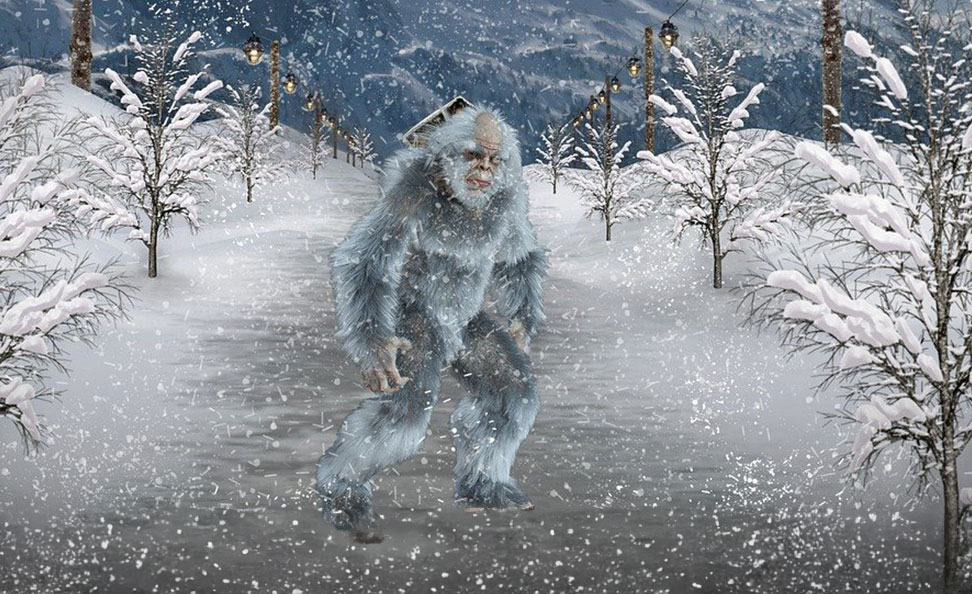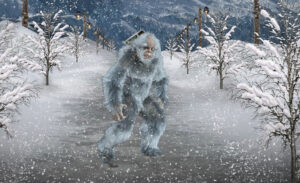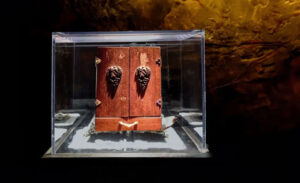The Thunderbird is a legendary cryptozoological North American creature that has captivated the imaginations of countless individuals for generations. It is said to soar through the skies of North America, its massive wings causing thunderstorms and its piercing eyes striking fear in all who encounter it.
But what is the truth behind the Thunderbird? Is it a figment of our imaginations, or does it have the basis in reality?
Historical Sightings and Stories

Native American stories about the Thunderbird
Among the many indigenous tribes of North America, the Thunderbird holds a special place as a powerful spiritual entity.
While descriptions of this creature vary slightly from tribe to tribe, the Thunderbird is generally depicted as a massive, supernatural bird, often with some aspects associated with lightning and thunder. In some tribes, the Thunderbird is seen as a benevolent spirit, helping to protect their people and maintain the balance of nature.
In others, the Thunderbird is seen as a wrathful deity, capable of meting out harsh punishments for those who displease it.
One famous Native American Thunderbird story comes from the Algonquin tribe.
According to their legend, a young man named Heno left his village and found a nest with four Thunderbird eggs. Despite the warnings of the Thunderbird mother, Heno took one of the eggs back to his village, leading to devastating storms and floods. Heno eventually returned the egg and was turned into a Thunderbird.
Sightings by Colonists in the 1700s-1800s
During the time of European colonization in North America, reports of enormous birds with wingspans stretching as much as thirty feet began to circulate.
In 1890, an Arizona newspaper published an account of two prospectors in the desert who stumbled upon the remains of a North American creature they identified as a Thunderbird.
The article included a sketch of the animal, which bore a striking resemblance to a pterosaur – a now-extinct genus of flying reptiles.
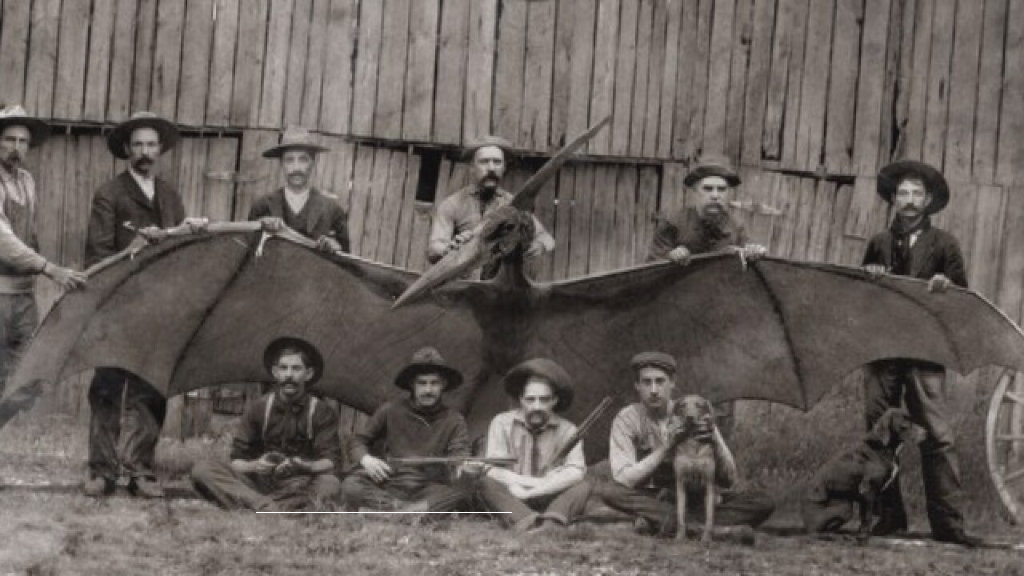
Prospectors pose with a North American creature they identified as a Thunderbird.
Another story from the 1800s includes the alleged capture and display of a living Thunderbird in the town of Tombstone, Arizona. While there are no verifiable records to support this tale, it has fueled speculation about the possible existence of such a creature well into modern times.
Modern Day Sightings and Reports
Eyewitnesses continue to report Thunderbird accounts, even into the the 20th and 21st centuries.
In 1977, a group of children in Illinois claimed to have seen a massive bird with a wingspan wider than a nearby building. The creature allegedly tried to snatch one of the children off the ground, dropping him only as the other children began to scream.
More recently, in 2015, a Pennsylvania man captured footage of a large, winged creature that many insisted resembled a prehistoric pterosaur. The video made local news headlines, prompting renewed debates about the possibility of a living Thunderbird species.
Possible Explanations for the Thunderbird Phenomenon
Pterosaur Theory: Could Extinct Creatures be Responsible?
Is it possible that Pterosaurs have survived millions of years on Earth, unnoticed until now?
Proponents of this theory argue that sightings of Thunderbird-like creatures could be explained by the existence of an undiscovered population of pterosaurs that has managed to elude human detection.
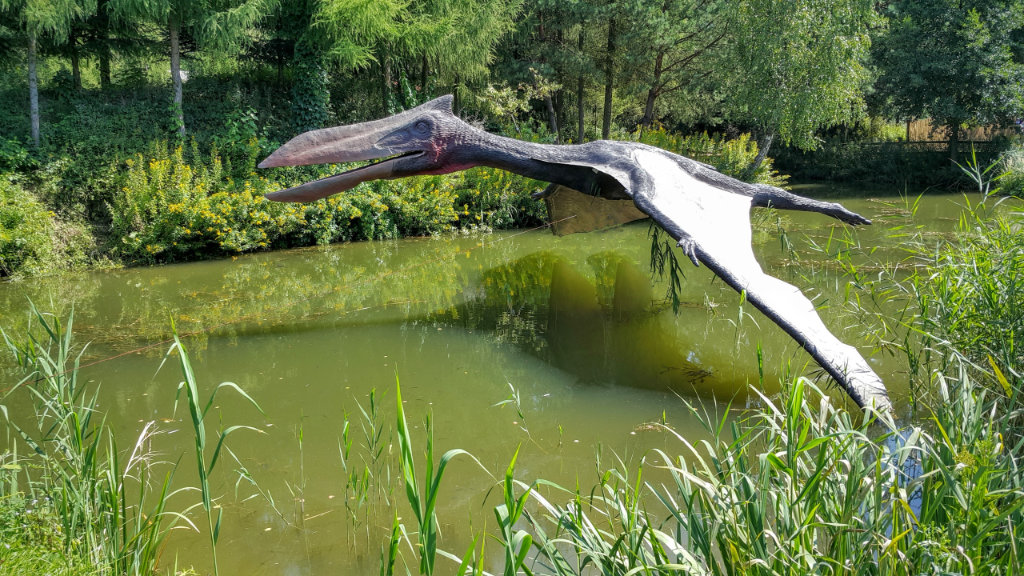
This idea seems far-fetched. But it’s not without merit. Examples of species of living animals once thought to be extinct, like the coelacanth fish, have been found alive today.
However, mainstream paleontologists argue that the chances of pterosaurs surviving into the modern era are slim to none, and without hard evidence such as a living specimen, a Thunderbird-pterodactyl connection remains in the realm of speculation.
Cryptozoology: Is There a Biological Basis to Explain These Sightings?
Cryptozoologists, those who study and seek evidence for hidden or unknown animals, often propose that the Thunderbird sightings may be the result of a previously undiscovered species of large bird. They argue that human exploration of North America is not exhaustive, and vast expanses of remote wilderness could provide ample habitat for a secretive, cryptic species.
The Andean condor for example, a very large vulture found in South America, is thought to be responsible for some of the Thunderbird sightings being reported.
With a wingspan of up to 10 feet (3 meters), it’s possible that a few of these mighty birds could have ventured into North America and been mistaken for the legendary Thunderbird.
However, critics argue that a large, predatory bird like the condor would likely have left significant ecological and cultural impacts on the regions it inhabited, and no such evidence has been found to support the existence of a Thunderbird-like creature.
Hoaxes or Misidentifications: Are People Mistaking Uther Animals for Something Else?
Another potential explanation for Thunderbird sightings is that they are simply the result of misidentifications or hoaxes.
Many large bird species can be found in North America, such as eagles and turkey vultures, which might be mistaken for a mythical Thunderbird when seen under the right circumstances. When viewed from a distance in poor conditions, these birds can seem much larger than they really are.
Moreover, humans have a penchant for exaggeration and storytelling, which may contribute to the perception of these creatures being larger or more extraordinary than they are in reality.
Psychological Explanation: Are People Seeing What They Want to See?
The human brain is complex and not completely understood. It’s easily tricked into seeing things that are not really there. This phenomenon is called Pareidolia. And it happens a lot. The brain attempts to make sense out of otherwise meaningless occurrences by interpreting them into more familiar patterns.
In the context of Thunderbird sightings, it is possible that people are primed to see a large, mysterious bird due to their cultural background or personal beliefs.
When presented with an ambiguous or poorly-observed flying creature, their brains may unconsciously fill in the gaps and construct an image of the mythical Thunderbird they have long heard tales about.
Mystical Finale
The mystery of the Thunderbird, the North American creature, remains strong to this very day. It seems that as long as reports of giant flying creatures continue to emerge, the legend of the Thunderbird will endure – whether these sightings are the product of misinterpretations, hoaxes, or even creatures yet unknown to science.
Ultimately, the truth about the Thunderbird may lie in the realm between fact and folklore, serving as a testament to humanity’s enduring fascination with the unexplained mysteries of our world.


